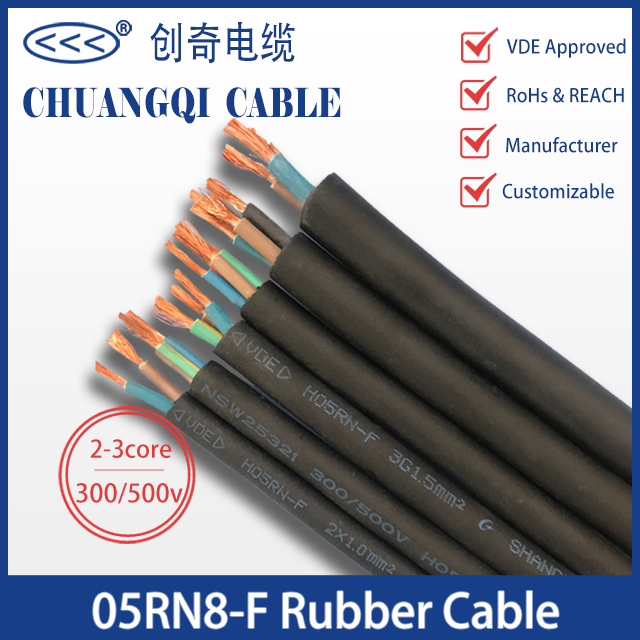The cable is the bridge between the power supply equipm […]
The cable is the bridge between the power supply equipment and the electrical equipment, and plays the role of transmitting electric energy. It is widely used, so failures often occur. The following is a brief analysis of the causes of common problems of high-voltage cables. According to the causes of failures, they can be classified into the following categories: manufacturer manufacturing reasons, construction quality reasons, design units design reasons, external force damage Four categories.
1. Reasons for manufacturer's manufacturing
Manufacturers' manufacturing reasons are divided into three categories: cable body reasons, cable joint reasons, and cable grounding system reasons.
(1) Reasons for manufacturing the cable body
Generally, the problems that are likely to occur in the cable production process are insulation eccentricity, uneven insulation shielding thickness, impurities in the insulation, protrusions on the inner and outer shields, uneven cross-linking, dampness of the cable, poor sealing of the cable metal sheath, etc. Some cases are relatively Seriously, failures may occur during the completion test or soon after being put into operation, most of which exist in the form of defects in the cable system, causing serious hidden dangers to the long-term safe operation of the cable.

(2) Reasons for manufacturing cable joints
High-voltage cable joints used to be wrapped, molded, molded, etc., which required a large amount of work on site, and due to the limitations of site conditions and the manufacturing process, there would inevitably be an air gap between the insulating tape layers And impurities, so it is prone to problems. Now the commonly used types in China are assembly type and prefabricated type.
Cable joints are divided into cable terminal joints and cable intermediate joints. Regardless of the type of joint, cable joint failures generally appear at the cable insulation shielding fracture, because this is the place where electrical stress is concentrated, and the cause of the cable joint failure due to manufacturing reasons is stress. Cone body manufacturing defects, insulating filler problems, oil leakage of the sealing ring, etc.
(3) Cable grounding system
The cable grounding system includes cable grounding box, cable grounding protection box (with protective layer protector), cable cross interconnection box, protective layer protector and other parts. Generally, the problem that is prone to occur is mainly due to the poor sealing of the box body, which leads to multi-point grounding, which causes excessive induced current in the metal sheath. In addition, the parameter selection of the protective layer protector is unreasonable or the quality is not good. The unstable zinc oxide crystal can easily cause damage to the protective layer protector.
2. Reasons for construction quality
There are many examples of high-voltage cable system failures due to construction quality. The main reasons are the following aspects: First, the site conditions are relatively poor. The environmental and technological requirements for cables and connectors are very high when the cables and connectors are manufactured in the factory. The temperature, humidity, and dust on the construction site It's not easy to control. Second, it is inevitable that small slip marks will be left on the insulation surface during the cable construction process. Semi-conductive particles and sand on the emery cloth may also be embedded in the insulation. In addition, due to the insulation being exposed to the air during the joint construction process, the insulation will also be inhaled Moisture, these all leave hidden dangers for long-term safe operation. The third is that the installation process did not strictly follow the construction process or the process regulations did not take into account possible problems. Fourth, the DC withstand voltage test used in the completion acceptance test causes the formation of a back electric field in the joints and causes insulation damage. Fifth, it is caused by improper sealing treatment. The intermediate joint must adopt a sealing structure with a metal copper shell and a PE or PVC insulating anticorrosion layer to ensure the tightness of the lead seal during on-site construction, which effectively guarantees the sealing and waterproof performance of the joint.
3. Design reasons
Breakdown due to cable squeezing caused by thermal expansion of the cable. When the load of the cross-linked cable is high, the temperature of the core will increase, and the cable will expand due to heat. The cable is on the vertical surface of the support at the turning point in the tunnel. The long-term heavy load operation of the cable has a large creep force, which causes the vertical surface of the support to crush the outer sheath of the rubber cable. , The metal sheath is squeezed into the cable insulation layer to cause cable breakdown.